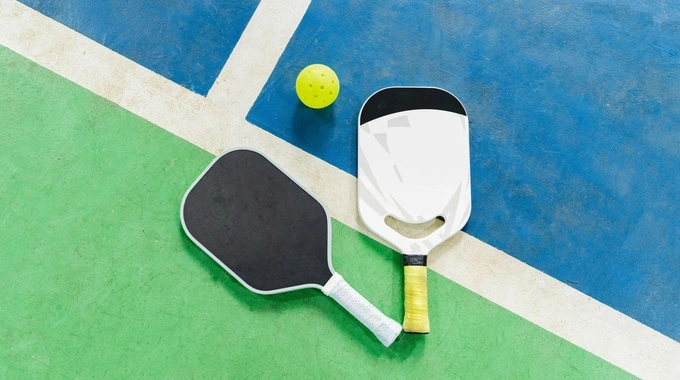Padel tennis or padel originated in Mexico in 1969, spread rapidly to Spain, and is now played in more than 90 countries worldwide. It is an exciting and fun way to get yourself moving and spend quality time with your friends and loved ones.
Padel in brief:
- Equipment. Padel is played using a solid graphite racket, which is smaller than tennis and squash rackets, and a ball that is very similar in appearance and materials to a tennis ball but has lower internal pressure, so it is softer and slower.
- The court. Padel tennis is played on special 10x20 m doubles or 6x20 m singles courts surrounded by 2.5 m high walls. The back walls and part of the side walls are usually made of concrete or tempered glass where the ball can bounce off the wall, while metal mesh panels occupy the middle section of the side walls. A net in the middle divides the court into two equal parts.
How do you play padel tennis?
Padel tennis has been growing in popularity in part because the rules are comparatively simple. Padel rules in a nutshell:
- Unlike the overhead serves in traditional tennis, serves in padel are always underarm.
- The court lines are only in play during a serve.
- The first serve of the game is done from the right side of the court diagonally into the opponent’s right side of the court.
- The height of the ball being served must be at or below the waist level.
- The server must bounce the ball once before making the hit, and the ball then has to bounce inside the opponent’s box.
- Once the ball hits the ground after a serve, it may bounce off the opponent’s glass wall, but not the wire fencing, which is considered a fault.
- During a rally, the ball may also be played off the walls, making the game more dynamic.
- Padel uses the same scoring system as tennis - 15, 30, 40, deuce/advantage, or the golden point to win a game. The first player or team to win six games, provided they lead by at least two games, wins a set. If the score is 6-5 during a set, another game must be played. Just like in tennis, if the score gets to 6-6, a tiebreak is played in which the winner is the first side to get to 7 points with two clear points.
Where do you play padel?
The rules are simpler than those of tennis, which is why padel has become so popular all over the world: Latvia, too, has Padel Tennis Federation, competitions are organized, and new courts to play padel are popping up. The first padel courts in Latvia were built in 2018, and we now have dozens of indoor and outdoor padel venues.
Where to play padel in Latvia?
- MH Padel in Mārupe with 8 courts is one of the largest padel clubs in Latvia
- Padel Club Riga courts on Ganību Dambis and Ķīšezera Street in Riga
- City Padel on Gustava Zemgala Avenue in Riga
- Ādaži
- Elsewhere in Latvia
Padel tennis is becoming increasingly popular in the other Baltic countries too, there are special courts available for both training and competitions.
Where to play padel in Lithuania?
- The biggest padel tennis clubs in Vilnius are Vilnius Padel, Fanu Stadionas Club, Savanorių Prospekto Padelio Arena
- Kaunas: Padel Sport Arena, Padel Hub, Tennis Space
- Klaipeda: Padelio Namai
- And in many other Lithuanian cities and towns
Where to play padel in Estonia?
- Tallinn: Padel Arenas, Padel+, Padel Company
- Tartu: Padel Industry, Padelstar
- And elsewhere in Estonia
What are the most common injuries and how to avoid them?
As in any sport, padel players can get injured, especially if they are not prepared well enough or play too hard. The most common injuries are to the knee, shoulder or elbow, fingers and hands, as well as ankles: bruises, dislocations, sprains or even fractures caused by moving too fast or too hard, or by stopping suddenly.
To avoid injuries in the excitement of the game, there are some important safety precautions to follow:
- First, learn the correct playing technique, preferably from a professional coach. You can hire a padel coach at all the major padel clubs and venues.
- Warm up before the game by swinging or rotating the leg, arm, shoulder, hip joints.
- Wear appropriate clothing - a loose and comfortable shirt and shorts or trousers, as well as sports shoes with good cushioning and grip on the court.
- Take out an accident insurance policy, which will cover the cost of treatment in the event of an injury.
